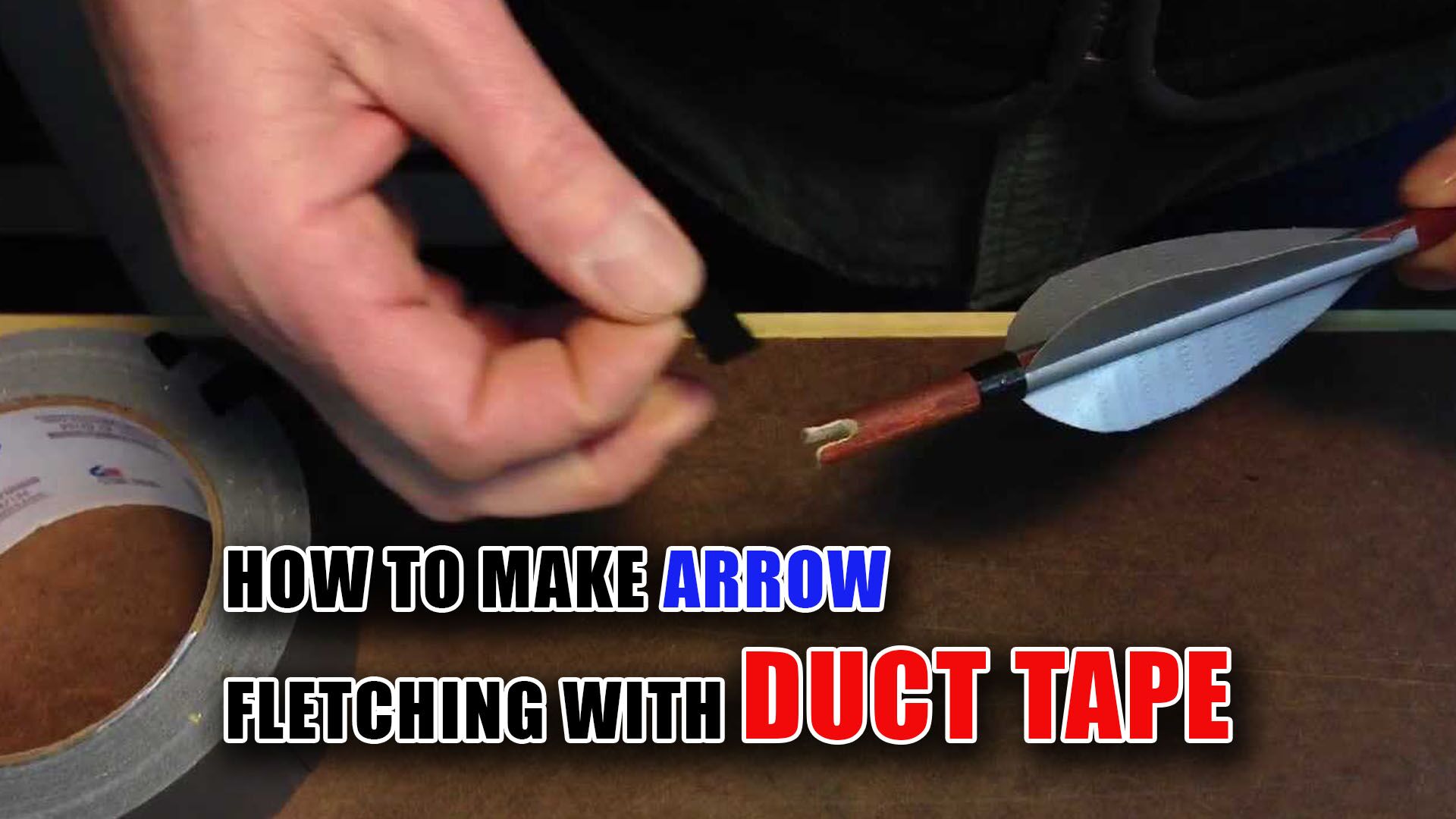
Several years ago I tried out Dave Canterbury’s sling bow. It was fun and I saw that it had potential, Unfortunately, arrows are expensive. The short arrows I bought just did not develop enough energy to be useful.
I decided to look into making my own arrows. Arrow-making has obviously been around a long time. So it is a pretty developed science. Feathers arraigned in a 3 feather system are the most common. However, some use 2 or 4 feathered fletching systems. Additionally plastic vanes are available commercially.
In today’s article we are going to go “mad max” and create Duct Tape Arrow Fletching.
The Prepper MacGyver’s Most Common Resource is Duct Tape.
The great thing about duct tape is that is common, cheap, is not too stiff so that it can bend as it comes in contact with the bow, but when doubled up is stiff enough to direct the arrow in flight.
To make fletching simply cut three bits of tape about six inches long.
Pick up one piece and bend it lengthwise to form a “U” with the sticky side outwards. The base of this “U” is stuck lengthwise along the shaft – in other words (and the video will help) the middle of the tape is stuck to 1/3 of the diameter of the shaft with the two ends flopping free.
Now pick up the second piece and bend it like the first one. This one will be stuck in position a third of the way around the shaft from the first one, while the first bit of tape is still bent in the “U” position to keep it out of the way. You do not want the two pieces of tape to stick together until you get everything situated. (I find that clipping the loose ends of the first piece of tape together keeps them out of the way.
Once you feel that the two pieces of tape are sitting in the right position, you can allow the two adjacent wings of tape to stick to each other, forming the first complete vane.
Mold the tape against the shaft to get it to stick well. The two bits of tape will sometimes stick without being exactly in the right position thus skewing the vane or making it lumpy.
Apply the third piece of tape is applied in a similar manner.
Tips for Duct Tape Fletching
A challenge with this tape fletching is to get three flat and evenly spaced vanes.
Another problem is to end up with the vanes where you want them in relation to your nock so that you get the conventional “cock and hen feather” configuration with the cock feather at right angles to the plane of the nock.
Once you have the tape into place, you can trim the vanes with sharp scissors.
Keep the vanes tapering down to nothing at the leading end so that they ride nicely past the bow and your bow hand.
Keep the vanes as narrow as possible and make the taper as long as possible.
You can also apply a tight wrap of soft insulation tape over the very front end of these plastic vanes to stop them catching and pulling away.
Obviously this won’t give you a good a result as using proper fletching and a jig like the one below, but it is serviceable and just the thing to use if your using a homemade PVC bow (more on that later).
